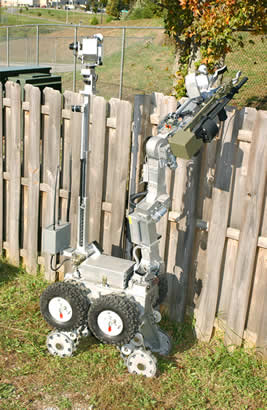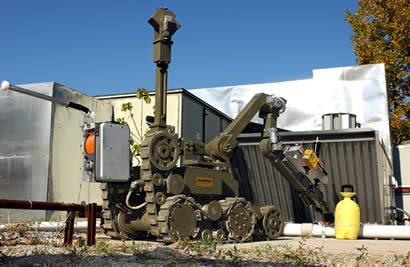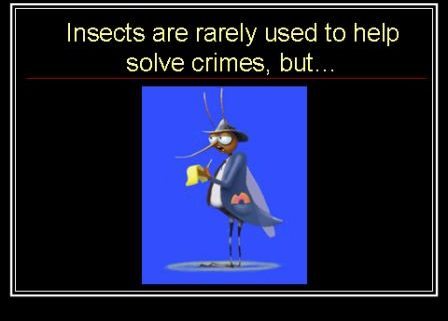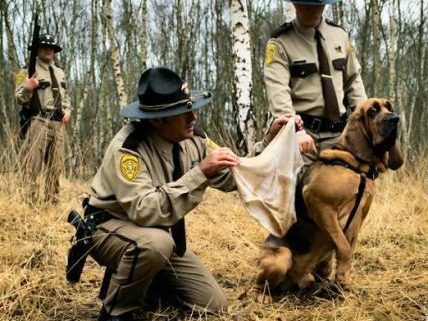Robin Burcell has worked in law enforcement for over two decades as a police officer, detective, FBI-trained forensic artist and hostage negotiator. She is the author of the Anthony Award winning SFPD Homicide Inspector Kate Gillespie novels: Every Move She Makes, Fatal Truth, Deadly Legacy and Cold Case, and the upcoming novel The Face of a Killer. You can visit her website at: http://www.robinburcell.com/
When our fight-or-flight response is activated, chemicals in our body are released into our bloodstream. This causes our body to undergo dramatic changes. Respiratory rate increases. Blood is directed into our muscles and limbs for the specific purpose of fueling that “fight or flight.” Most of us know this part of it. But it’s the other responses I find fascinating. You’ve probably experienced it yourself, or heard others say things like “my life flashed before my eyes.” In a way, they were right. In the fight-or-flight response, our awareness intensifies, our sight sharpens, our impulses quicken, and the biggie, our perception of pain diminishes.
It’s the reason you can be injured in a serious car accident, get up, help others in more serious need, but not realize you are even injured until later.
In a nutshell, it is a form of stress, and it’s something that cops experience far too often. The problem is that cumulative stress is bad. It manifests itself in unseen ways, such as hypertension, heart problems, etc. I’ve had my share of stressful incidents, many of which resulted in nightmares, or prolonged bouts of PTSD. Any cop who’s been on the street a while will tell you the same. For me, when the stress of the job became too much to bear, when I was experiencing far too many complaints of what I call short-temper syndrome, I knew I was in trouble. I began to hate my job and the people I was dealing with. I needed help.
Strangely enough, I found that help writing fiction. My fictional world became my psychoanalyst’s couch. I could kill off all sorts of people, and never face an IA investigation. I could come back with zippy one-liners that made even the most macho I-hate-female-officers-type cop shiver in his boots. And best of all, those pesky supervisors who never quite recovered from their post-promotional lobotomies, well, they usually found their just rewards in the pages of my manuscripts.
Suddenly I was walking down the hallways of my department with a bounce in my step. I hadn’t even sold my first book yet, but it didn’t matter. When I came home, I fired up that computer, and voil‡, my day’s problems were resolved.
If only real life were that easy.
But I digress. The reason I brought up the fight-or-flight response is because many of you who read Lee’s blog are interested in the real life stuff that you can use in your own writing. I’m no different. Aside from killing off pesky supervisors, I like to pepper my fiction with real-life scenarios, things taken from my own experiences to give my books that ring of authenticity. In FACE OF A KILLER, the first in my new series that debuts this fall (hardcover with Poisoned Pen Press, paper with HarperCollins), my character is an FBI agent/forensic artist, and I’ve tried to include a few scrapes for her to get into that give the reader an idea of what it’s like to become involved in a life-threatening moment where this response occurs.
One of the best scenes I ever wrote that never made it into one of my books (DEADLY LEGACY) was taken from a real life experience that happened when a suspect pulled a knife on me and my partner, a rookie barely on the street a few months. The strange thing about that real life case was that before it even registered in my mind, our guns were drawn. I couldn’t even tell you how my gun got in my hand. I was talking on the phone to dispatch at the time, trying to get information on the suspect, and the next thing I know, I’m pointing my Glock at this guy who has a knife drawn on us. Since I am also a trained hostage negotiator, I immediately began the process of negotiating the knife away from the suspect. The whole thing was caught on tape by dispatch, because apparently I had set the phone down to draw my weapon and the line was open the whole time. Up to that point, everything had happened so fast, but once we drew down on him, or rather once he drew his knife on us, everything happened in slow motion. Much like the special effect scenes in the movie THE MATRIX. It was all very surreal.
And the fictional account that I wrote about it was a great scene. Realistic, because it was taken from real life. Only in the book I changed the bad guy to a bad girl. Gender didn’t matter. Knives, as cops know, are deadly no matter who is holding one. Someone can pull a knife from twenty feet away and kill you before you ever get your gun out. Unfortunately for me, but probably fortunate for the readers of my series, my editor made me take the scene out. Actually she made me take out the entire thread involving this woman, because it didn’t move the story forward. And she was right. But it was still a great scene. It showed the fight-or-flight response in a cop, exactly what happens when danger strikes and a cop has that split second to act.
As humans, we’re all susceptible to this instinctual response. It occurs whenever you have been involved in any near-death experience, and even some not-so-near-death experiences. It’s your body’s way of reacting to protect you. You’ve probably experienced the mildest form on more than one occasion, maybe without even realizing it. Ever had to slam on your brakes in a car, because some nitwit turned in front of you? Felt the pins and needles in your wrists as you gripped the steering wheel, the pounding of your heart after the threat was gone? That was a rush and release of adrenaline, the start of the response designed to allow you to take action far quicker than you could have, had you not been scared.
But what if you haven’t experienced the real thing, and you want your cop or your protagonist in your story to experience it? What does it feel like? What happens when it’s over and done with?
Remember the part where I said I had my gun out and didn’t even know I’d drawn down on the guy? That occurred because when faced with fight-or-flight, a person resorts to training. It’s why cops spend hours on the range doing nothing but drawing his/her weapon at the sight of a threat. And further hours on proper shooting techniques, which sometimes means eliminating bad habits or developing good ones so that when under stress, when faced with fight-or-flight, the automatic response is to do the right thing. Training is all about developing good habits. Had we not been trained over and over to draw our guns for this “threat,” chances are we might have done something else without thinking. Dove. Tried to grab the knife. Fled, which is the other part of the response. Who knows?
But what about this whole Matrix thing? This life-flashing-before-your-eyes feeling, as if time-has-fragmented thing? It occurs because your senses have been heightened. You actually develop tunnel vision, the better to concentrate only on the immediate threat in front of you. In my case, the guy draws the knife, but then points it to his belly and says that we might as well kill him. My finger on the trigger actually releases past that first click. He is now a threat to himself. Not me. But then he lifts the knife. Trigger finger pulls slightly, hearing/feeling that first click. He’s a hairsbreadth away from dying. Then the knife is back down at his belly. Trigger finger releases again. It’s at this moment that our third backup, a lieutenant, arrives, walks in the door, assesses the situation. The suspect reaches up, grabs his sunglasses off his head and throws them at the lieutenant.
I can see the sunglasses spinning end-over-end. The lieutenant later tells me that he has no idea what the guy has thrown at him. Why? The lieutenant’s body has yet to react to fight-or-flight. His perception isn’t as heightened as ours, because he hasn’t perceived that his life has been threatened yet—that is until the sunglasses come flying at him. Because he doesn’t know what that object flying at him is, he perceives it as potential danger, and it changes his body’s response instantly. He sprays the guy with OC (pepper spray). But because I am fully in the threshold of the fight-or-flight response, I can see the clear liquid of the spray, the tiny droplets coming down as it arcs across the room. It hits the suspect in his face, and he’s not fazed—because his body is also in full fight-or-flight response. His sense of pain is diminished. He taunts the lieutenant, asking him what he thinks he’s doing. In the meantime, I’m trying to negotiate with him to drop the knife, because we really don’t want to kill him in his mother’s house, and I tell him to think of how bad she’d feel. Eventually, he tells us he will drop it. He spins, throws the knife into the couch, and it is buried hilt deep. (Open, the knife was eight inches. There is maybe an inch of the hilt left showing. I realize that could have been us, our bodies. But that thought does not enter my mind until later, when we remove the knife from the couch.) We rush forward, take him into custody.
When it’s all over and done with, we escort him outside and throw him in the back of my car, so I can drive him to mental health. The threat is now over, but our bodies have yet to recover. Slowly our senses are returning to normal. We begin to feel things that we were not aware of in the midst of all this. Our suspect begins to scream in pain that the pepper spray is hurting his face. I can actually start to feel the effects in my own eyes, the remnants of a sting, the taste of it in my mouth. I stand there by my patrol car, and suddenly my knees get shaky, and I feel nauseous. The adrenaline is now leaving my body, and the blood that fueled my extremities is returning to other parts, trying to get my body back to normal.
I’m pretty much good for nothing for the next several minutes. But I have an easy job. It’s my call, so I have to drive the guy to mental health, which means I have at least an hour or more to slowly get back to normal. The rookie isn’t so lucky. He has to return to the street.
What I find amusing in cop shows are the scenes where a cop is fully in the midst of the fight-or-flight, saves his partner, or kills the bad guy, or performs some other brave feat, then stands there and has a normal conversation like it’s no big deal, never even breaking a sweat. Hands aren’t shaking, voice isn’t quavering.
Not gonna happen in real life.





























